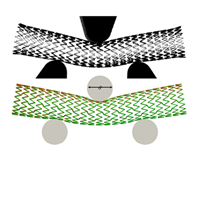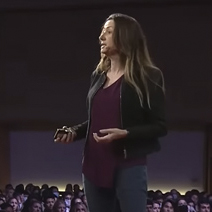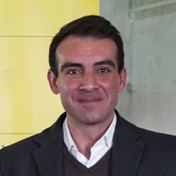events
Severo Ochoa Seminar at CIMNE - "Disaster risk assessment", by Martha Liliana Carreño
Wednesday, November 18th, 2020. Time: 12 noon
ONLINE / Link for online session: meet.google.com/gzo-dhcu-hyt
ABSTRACT
Different natural events can run into disasters when there are a series of socioeconomic factors that allow it. With a significant magnitude, some of these disasters can impose severe economic restrictions on a region or a country beyond direct losses such as collapsed buildings, deceased people, and injuries. Disaster risk is a topic widely involved by different global agendas such as the Sustainable Development Goals, the Paris Agreement on Climate Change, and, of course, the Sendai Framework for Disaster Risk Reduction. This implies that it is part of a global commitment, where countries with different income and development degrees seek to reduce the damage caused by these events in their communities.
There are few, if any, intervention measures that can be implemented for natural hazards with low-frequency and high-intensity events (for example, earthquakes and hurricanes). It is possible to design plans to reduce structural vulnerability, improve territorial ordering, and be prepared to attend a potential emergency.
There are different ways to assess catastrophic risk; the applied engineering models have proven robust enough to quantify possible future losses and design comprehensive risk management strategies. These strategies can include several actions, such as the structural reinforcement to improve the performance of critical structures in case of seismic or wind stresses, or the implementation of financial protection systems in the form of insurance in the traditional way and/or alternative risk transfer instruments such as catastrophic bonds.
The risk assessment using engineering approaches requires the representation of different components such as hazard, exposure, and vulnerability with specific characteristics that account not only for expected values but also for uncertainties. Therefore, such evaluation is frequently performed from conceptual frameworks within a probabilistic field. It is relevant to identify and quantify each of these components' uncertainties and propagate them through the analysis.
The catastrophic risk can also be analyzed from a holistic approach involving the potential losses evaluation with the affected area's social vulnerability. Factors such as available public area, number of hospital beds, and the existence of emergency plans can be involved in such analysis. Other aspects allow the characterization of a population's needs, such as crime rates and level of school literacy can also be involved in the analysis. These holistic evaluations identify the factors that amplify direct losses' impact to intervene and reduce the possible impact.
SPEAKER CV
Civil Engineer (1999) and M.Sc. in Structural Engineering (2001) by the University of Los Andes, Bogotá, Colombia. Doctor in Earthquake Engineering and Structural Dynamics (2006) by the Universitat Politècnica de Catalunya (UPC), Barcelona, Spain. She was linked during the year 2001 to the Colombian Association for Earthquake Engineering (AIS) as an engineer in charge of the development of field guidelines and of forms for post-earthquake damage evaluation. During her Doctorate studies (2001-2006), She was awarded with a grant by the ProVention Consortium in the frame of the programme “Applied Research Grants for Disaster Risk Reduction” to developed the project “Expert System for Post-Earthquake Building Damage Evaluation and Massive Risk Occupancy Decision-Making” (2003). The work was selected to be presented in the “Global Symposium for Hazard Risk Reduction” at the World Bank headquarters in Washington DC, in July 2004.
She worked from 2006 to 2008 in the Inter-American Development Bank (IDB) as a PhD Research Fellow in the field of the Disaster Risk Management. In this position She was in charge of the design, promotion and review of works related to technical cooperation in different countries of the Latin-American and Caribbean region. In 2008 She was awarded with the Beatriu de Pinos post-doctoral grant of the Agency for Management of University and Research Grants of the Generalitat de Catalunya, Spain (2008-2010) and she started to work as a researcher at the International Centre for Numerical Methods in Engineering (CIMNE). She currently work in various research lines related to integrated disaster risk assessment and risk management in which She published various articles. She is also Adjunct Professor (Profesor Asociado) at UPC from 2009. Her teaching activity is in the field of Structural Dynamics and Seismic Risk Evaluation in the official Master Program in Civil Engineering of the UPC.
Her main research lines are: the holistic evaluation of the disaster risk, the habitability evaluation of buildings affected by earthquakes, the evaluation of the disaster risk management performance, the disaster risk management evaluation from a macro-economic perspective, the Hybrid Loss Exceedence Curve (HLEC) for disaster risk evaluation, the probabilistic cost-benefit analysis for seismic risk mitigation measures, the probabilistic assessment of seismic risk in terms of lost economic production due to premature loss of lives, and the risk and vulnerability analysis for hurricane risk. She have supervised 6 Doctoral Theses already finished in these fields. She is author of more than 20 papers in indexed scientific journals, of several chapters in books, monographs, and communications in international conferences.





















